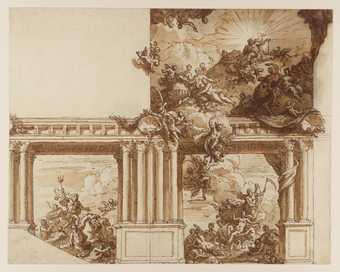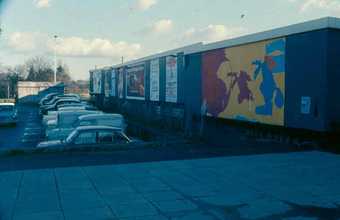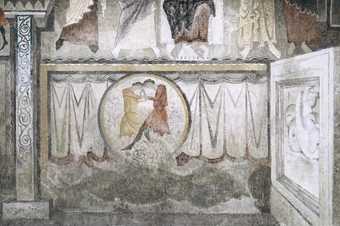
Sir James Thornhill
A Ceiling and Wall Decoration (c.1715–25)
Tate

Eric Malthouse
Midsummer (1967–8)
Tate

Valerie Thornton
Bominaco (The Abruzzi) (1988)
Tate
The popularity of the mural in the Western world began in the nineteenth century, with a new, community-orientated sense of national identity. The advantage of a mural is its accessibility to a large audience, which has endeared it to many political ideologies.
In the 1930s there was a worldwide trend towards making art more public in reaction to the introspective development of modern art. In Latin America, USA and Britain, mural painting became popular thanks to governmental sponsorship in the form of organisations like the Artists International Association. In 1933 Mario Sironi published his Manifesto of Mural Painting and commissioned murals by Giorgio De Chirico and Carlo Carrà. In Germany, Italy and the USSR murals reflected the totalitarian propaganda of the State.
By the 1970s murals in the Western world were engineered to local politics, often revealing a sense of national, racial or civic pride in the area.
- See also Mexican muralism
